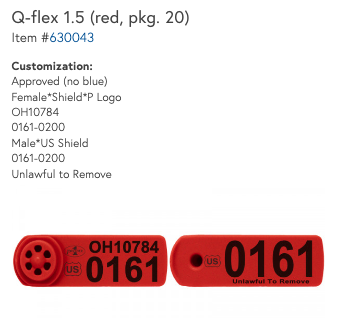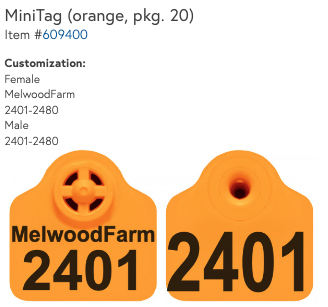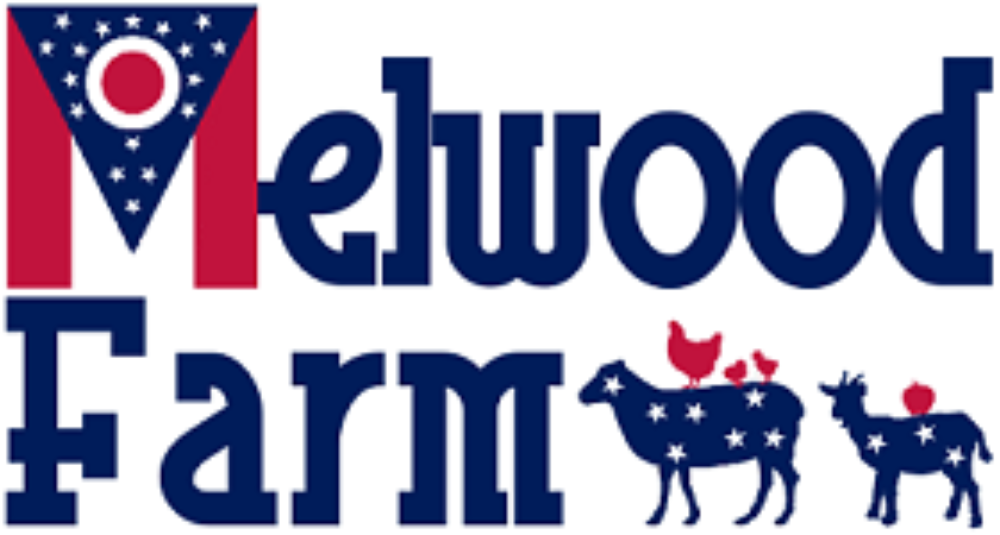As lambing approaches, many shepherds start thinking about their ear-tagging system. I’m often asked how I do this by those new to sheep. The whole process was rather confusing to me as a beginner, so I totally understand and want to help! This post will explain which tags I use, my system for identifying lambs with tags, when, and how I tag lambs.
Why Use Ear-Tags?
Before I start describing my ear-tagging system, it’s important to understand why ear-tags are used. Those who have a couple of sheep for lawn ornaments or pets probably don’t need to worry about tags unless they decide to sell them. The rest of us really should tag our sheep.
Ear-tags serve as a means of permanent identification. No matter where that sheep goes, or what the owner decides to name it, the number goes with it. As a bonus, they serve as visual identification. This is particularly important for those who raise sheep that are visually indistinguishable and for those with large flocks. By tagging sheep’s ears, the shepherd can quickly identify each animal. This makes it easier when it’s time to sort them, treat them, or record information about them. There are even RFID tags, which can be read by an electronic scanner.
Are Ear-Tags Required?
The short answer to this question is No. The long answer is that it depends! If a sheep is born, raised, and dies on your property, and you don’t participate in a registration service like SCHSB or a performance tracking service like NSIP, you are not required to tag it. However, if any of those conditions is untrue, tags (or another form of permanent identification – more on that later) are required by law and/or by the conditions of participation in the organization.
The USDA has a full set of very complicated regulations about identifying sheep. To keep things simple, any sheep that leaves your property, with very few exceptions, must have an approved form of permanent identification. The easiest form of that identification is a scrapie tag. Some registries have established a relationship with the USDA so that owners of registered sheep can use other forms of permanent identification including tattoos and microchips. Refer to this fact sheet for more information about these laws.
Each registry has its own requirements regarding permanent identification. St. Croix Hair Sheep Breeders requires all sheep to be permanently identified using an ear-tag, tattoo, and/or microchip. The chosen form of identification also serves as the sheep’s scrapie identification as long as the owner records that identification with the registry.
My Early Ear-Tagging System
During my first two years, my flock was small, and I used a single ram to breed all my ewes. I chose to use a single tag during those years, and that method worked well at the time. Because I wanted to use a single tag, I used scrapie approved Qflex 1.5 tags that I ordered from Premier1 Supplies. I really like these tags because they are small and sheep rarely tear them out of their ears.
My Current Ear-Tagging System
I could continue using a single tag if I wished, but I’ve since moved to using two tags for three reasons. First, the Qflex 1.5 tags, especially when used as scrapie tags, are impossible to read from a distance. This is because scrapie tags have lots of numbers on them. They must include your USDA-assigned flock ID, plus a unique number for each animal. My USDA flock ID is OH10784, and I use a sequence of four numbers. That’s a lot of information to include on a very small tag! For this reason, I decided I want to use the Qflex MiniTag that is a little larger so that I can read it easier.
The second reason I decided to use two tags was because a couple of lambs and adults tore out their tags. That doesn’t happen often. However, when you have over fifty lambs and twenty-five ewes, and more than one loses a tag, it can cause serious problems. By recording each tag, I can still identify the animal if one tag falls out.
Finally, I wanted a way to visually identify my sheep by their sire and by the year they were born. I use three rams now. I have assigned each ram his own color, and I use that color for the lambs’ scrapie tags. It’s important to be able to sort ewes efficiently during breeding season, or to select ram lambs that are unrelated to a group of ewe lambs for starter flocks. Each year, I use a different color flock tag and the first two numbers represent the year.



When & How I Tag
I tag lambs the day after they are born just before I release them and their dam from the lambing pen. My Breeding Plan determines the correct color scrapie tag to use. Jasper’s lambs have red scrapie tags, Ebenezer’s lambs have black ones, and Patton’s lambs will have yellow scrapie tags. I collect the tags, Allflex tag applicator, betadine pads, hanging scale, bucket, and record sheet.
Once in the barn, I select a lamb, determine the sex, swab the ears and points of the tags using the betadine pads, and then tag accordingly. I tag ewe lambs with the flock tag in their right ear, scrapie tag in the left. Ram lambs are the opposite. After tagging, I weigh the lamb(s) and record all their information on the record sheet. The little family is then free to join the rest of the flock.
Because of this system, I can tell a lot about the lambs in the main photo above. The blue tag in their right ears tells me they were born in 2023 and are both ewe lambs. The purple scrapie tag in their left ear tells me they were sired by MFO 2230 JackOak.

